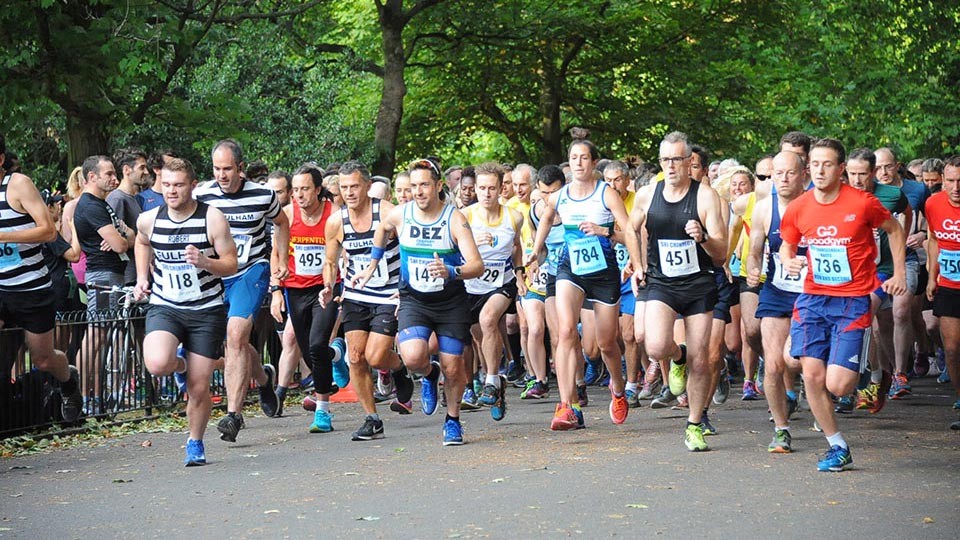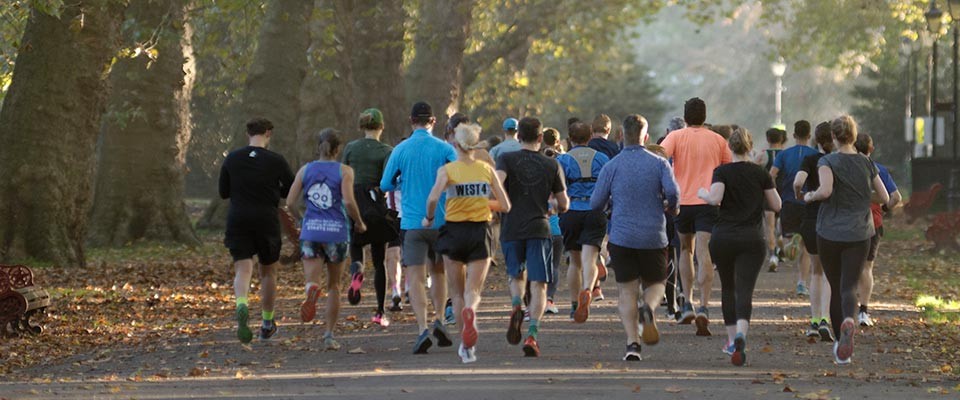RUN BETTER WITH OUR NEWSLETTER
Weekly updates on gear, offers & events
JOIN NOW
If you're training to run your first race you might want to start giving some thought to what you will wear on the day. You want to make sure you are suitably dressed for the weather conditions, and feel comfortable and confident in your choice of outfit. Training in the gear you will race in is definitely recommended. Here's how to put together a race kit list.
Shoes / Clothing / Accessories
If you don't already have a properly fitted pair of running shoes, that should definitely go on your 'to do' list. Ideally you should have the shoes a few weeks beforehand to make sure they are well worn in, but try not to leave it closer than two weeks before the race. Take advantage of our personalised shoe fitting service:
It's important to bear in mind that most runners heat up more when racing, plus you can also get hotter running in a group of people if it's a large field. Many runners will race in less clothing than they would train in, and choose their race day clothing based on the conditions for that day.
So it's helpful to start checking the weather forecast a few days before you race – you don't want to wake up one day and find it's suddenly a little warmer than it has been, and your favourite T-shirt is in the wash after your last gym session! Also look at the wind speed – strong winds will bring the temperature down if the course is exposed. We've hand picked our top favourites to get you started.

It doesn’t matter if you’re a competitive runner or you’re joining races for good fun – you still want to feel light and fast in your running gear. Check out our selection of super-light and breathable tees and long-sleeves, to keep you right on track with your training and racing.
There are so many options of specialist running shorts and leggings in our range. The main consideration most runners have with their shorts is that they don't chafe, so check out the 2-in-1 style. The extra lycra layer is great for preventing unpleasant chafing. If you want to travel as light as possible with a single layer, we've got loose shorts or lycra in various lengths. For colder weather, or for those who feel the cold, consider leggings or trousers.
By race day, you want to have tested out all of your kit and know your favourite items, plus what temperature they are most suitable for, so you can make a wise choice on the day. In terms of feeling 'fast' while racing, less is definitely more, but if you do need to carry things, think carefully about what you really do need to take, and look for the smallest, lightest option. See below for the best accessories to accomodate you on your race day.
Socks / Waist Packs & Race Belts / Bottles / Nutrition / Headphones / Watches / Chafe & Blister Prevention / Hats & Gloves / Compression
The type of socks you choose to wear for your race can be the difference between a good race and a not so good race! Make sure you test the socks (and all your clothing) that you plan to wear for your race in training, to ensure you feel good in them and have no issues.
We stock lots of running socks to choose from. It tends to come down to personal choice, regarding padding and length, or perhaps a lucky team colour!
Waist packs or pouches come in many shapes and sizes. They can be a useful accessory to store anything essential while racing: from gels to car keys and spare hair bands, there is often something you can't go without.
Some people don't like to run with anything attached to them, whilst others are happier to have the things they feel they need on their person. Whichever category you fit into, there is bound to be a type of waist pouch that will suit your needs when you just can't avoid carrying the essentials.
Drinks will probably be provided at your race – be sure to check that out ahead of time. Depending on the weather and your physical fitness, you probably won't need to drink much, if anything, during a 5k anyway. Some people like to be in control of their fluid intake though, so a handheld bottle can be useful. Soft bottles – which collapse and get easier to carry the more you drink – are now very popular too, and the smaller ones can fit into a waist pack.
Nutrition is a really important aspect to consider when racing. What works for one person probably will not work for another! The best thing to do is to try a variety of options when training. For anything above 10 miles it is certainly a good idea to consider Energy Gels, Energy Drinks, Energy Chews or Energy Bars. For more information on nutrition for racing, see Fuel Your Body for Running.
The only note of caution here is that you must remember when racing to check with the race organiser as to whether it is permitted for you to run with headphones in. It is common for this not to be allowed due to safety issues. The only headphones that are now generally permitted in road races are the bone conduction headphones. Shokz headphone are Scottish Athletics and English Athletics race-approved headphones. They sit just in front of the ear and the music you are listening to travels by bone conduction to the ear while you hear everything else in the normal way.
The most basic function of a running watch is to track how long you've been running, and perhaps to record your mile splits on a longer race. This will help you ensure you're meeting any targets you've set yourself, while making sure you're not running too fast and peaking early.
Beyond that, GPS watches have a wide variety of features, such as a heart-rate monitor, route mapping, multisport features, and sophisticated training programmes.
A watch is, however, not essential and some people just prefer to run how they feel without the pressure of being aware of the time.
There is nothing worse when racing than to chafe. It is not very comfortable, and especially in warmer weather when you sweat more it can be pretty stingy as well! Anti-chafe products are great at preventing this from happening.
BodyGlide works similar to a stick deodorant, you just roll it on the areas where you are likely to chafe and it creates a protective layer between your clothing and your skin. It is not greasy and therefore does not cause any discolouring on clothes.
You don't want to wear too much when racing, and end up carrying more than you need. Again, training in the gear you're considering for a race is a great idea – preferably in conditions that the race is likely to be in. Some caps fold up so they can be stashed in a pocket. If you just want to shade your eyes rather than your whole head, consider a visor, or sunglasses.
Calf sleeves or compression socks are a great accessory if you're prone to sore or tight calfs, or simply want to give your calfs and shins a bit of protection when racing. Compression gear helps blood flow and keeps your muscles warm, so in colder weather especially these are great. They may just give you that extra bit of confidence to go flat out in your race!
Andrea MyersMarch 22, 2018 at 7:00am
I like how you mentioned about checking the weather forecast a few days before you race for you to decide what type of running clothing to wear. We are planning to join a fun run next month, and we are thinking what type of running clothing we should wear. I'll make sure to keep this in mind and visit one of the sports stores in our area if they can recommend an activewear clothing for the fun run.
ReplyBhauliya MossMarch 23, 2018 at 3:21pm
Hi Andrea,I'm so glad you found our blog post helpful. Remember to buy your running clothes in plenty to time to try them out before race day. I hope you enjoy your fun run and many thanks for the positive feedback.
Reply